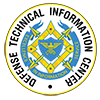Revived Cold War Tech for Long Duration Flights Could Solve Earth”s Energy Crisis
Humanity is in a serious pinch for energy. The world population may balloon to 9 billion people by 2040, up from 7.36 billion in 2016, and researchers believe this will translate to a 48{f852dafd27cac84fdac768484a17b914ab8ab8a105c7cd3f00f3e5984b2da150} jump in energy consumption. Fossil fuels could slake the world”s thirst for energy, but burning more would exacerbate climate change and










